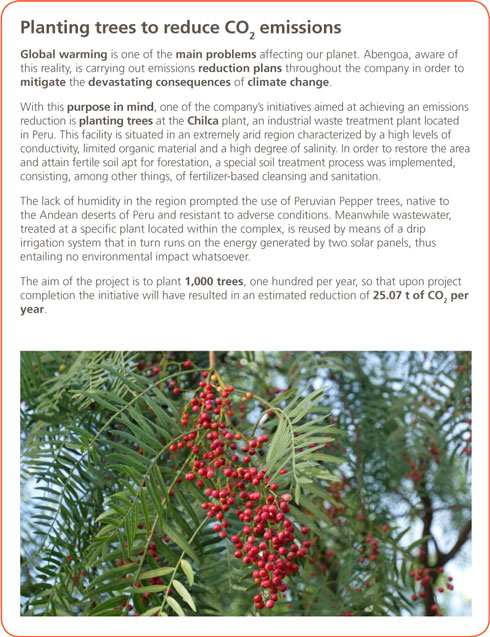 Abengoa
Abengoa
Annual Report 2012
- Corporate Social Responsibility
- Environment
- Environmental Management System
Together with the GHG Management System, the Enviromental Management System (EMS) affords the company a complete picture of its impact on the environment. The EMS contains a series of indicators which, based on eleven environmental aspects or factors, enable the organization to compile information related to relevant aspects associated with environmental sustainability and linked to Abengoa operations. The eleven factors are:
- Raw materials.
- Energy.
- Water.
- Effluents and discharges.
- Wastes.
- Emissions.
- Biodiversity management.
- Products, services and transportation.
- Odors.
- Noise.
- Soil and aquifers.2
In addition, one of Abengoa’s strategic objectives is to implement environmental management systems in all of its companies in accordance with ISO 14001 requirements in order to mitigate the potential negative environmental impacts of its products and services.
Activities with a significant environmental impact must likewise be taken into consideration in monitoring and measurement plans and in operational control programs for all companies that have ISO 14001-certified environmental management systems in place as assessment tools.


Note 2: This report does not include data related to Abengoa’s impact with respect to factors involving effects in terms of odors, noise and soil and aquifers due to the fact that global historical reference data are not yet available.
Note 3: Percentage established according to sales volume.
© 2012 Abengoa. All rights reserved
